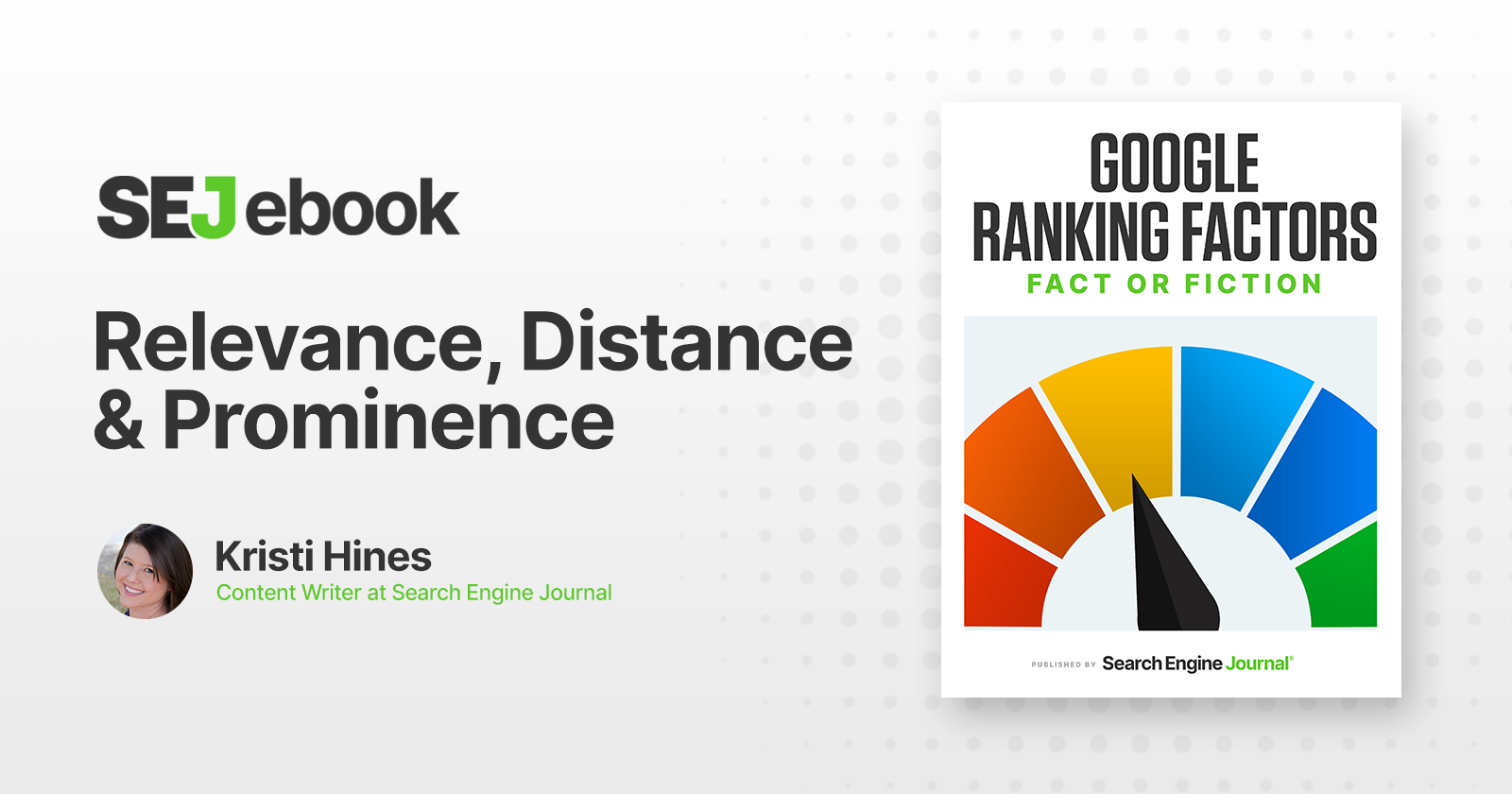SMART Goals: How To Write Effective Goals With Examples via @sejournal, @kristileilani
Learn how to write effective SMART goals for your organization that help your marketing team achieve better results. The post SMART Goals: How To Write Effective Goals With Examples appeared first on Search Engine Journal.

SMART goals are well-known for creating achievable and measurable business or personal objectives.
In this article, we’ll look at what SMART goals stand for, why people use them to achieve a desired result, and how SEO and marketing professionals can use them to achieve predetermined objectives.
What Are SMART Goals?
The acronym for SMART goals stands for:
Specific. Measurable. Attainable or Achievable. Relevant. Time-Bound.Each component of a SMART goal is designed to ensure that you have the proper framework to accomplish an objective. Instead of making open-ended wishes for the future, you make a purposeful plan.
For example, most business owners have a common goal of increasing profits. But that isn’t a SMART goal due to its lack of specificity – there is nothing specific to strive for or measure.
We will go deeper into the components of building a SMART goal, but first, let’s discuss the why.
Why Use SMART Goals
Marketing professionals that create a plan are three times more likely to report success than those who do not plan ahead, according to a study by CoSchedule.
This would explain why brands implement SMART goals for more than increasing profits.
SMART Goal Examples
The following examples show the use of SMART goals to reduce environmental impact and increase diversity and inclusion.
IBM
IBM uses SMART goals to help the environment by committing to reduce greenhouse gas emissions and become more energy efficient. Here are just a few of its goals.
Use of renewable energy for 75% of the electricity IBM consumes worldwide by 2025 and 90% by 2030. A 65% reduction in greenhouse gas emissions by 2025, using 2010 as the base year with adjustments for acquisitions and divestitures. Achieve net-zero greenhouse gas emissions by 2030 with 350,000 metric tons or less of CO2 residual emissions. Implement at least 3,000 energy conservation projects to avoid using 275,000-megawatt hours from 2021 to 2025. Make a 20% improvement in average data center cooling efficiency by 2025.McDonald’s
McDonald’s uses SMART goals to reduce its restaurants’ environmental impact on the planet. Amongst these goals, you will find the following:
A 36% reduction in absolute emissions from McDonald’s restaurants and offices by 2030, using 2015 as a baseline. A 31% reduction in supply chain emissions by 2030, using 2015 as a baseline. 100% sourcing of guest packaging from renewable, recyclable, or certified sources by 2025.Nestle
Nestle uses SMART goals for sustainability initiatives to minimize the company’s impact on global resources. Here are examples of its upcoming goals.
Reduce emissions by 20% by 2025 and reach net zero by 2050, using 2018 as a baseline. Use of 100% deforestation-free primary supply chains for all products by 2025. Use of 100% recyclable or reusable packaging materials by 2025. 200 million trees planted by 2030.Salesforce
Salesforce uses SMART goals for employment diversity and inclusion initiatives. In addition to showing its current progress, its goals are as follows:
A 50% increase of Black, Indigenous, Latin, and multiracial employees in the U.S. workforce by the end of 2023. A global workforce includes at least 40% women or non-binary employees by the end of 2026.How To Write SMART Goals: A Breakdown Of Each Component
Now that you know why SMART goals matter and a few ways that brands use them, let’s look at how to write them with a breakdown of each part of the SMART goal-setting process.
Specific
A specific goal should be unambiguous – anyone working towards the goal should know exactly what the goal means without needing further context or explanation.
When you create a specific goal, you should clearly define the objective’s what, why, who, and where. What specific objective do you want to achieve, who will help, and where will the objective happen?
How can you include specificity in your marketing team’s goals? Here are some examples.
Increase organic search traffic to the ecommerce store by 25%. Increase click-through rate (CTR) for the leading product page by 15%. Increase Instagram followers by 50%.Measurable
A measurable goal is quantifiable, allowing you to track your progress and know when the goal has been achieved. It should clearly define specific numbers around the objective.
How can you make your marketing team’s goals measurable? Here are some examples.
Increase website visits from social media from 1,000 to 3,000 per month. Decrease bounce rate for blog posts from 50% to 40%. Increase email open rates from 23% to 30%.Attainable
An attainable goal can be accomplished using the skills and resources you have available to you. It should define what resources will be used to achieve an objective.
How can you make your marketing team’s goals attainable? Here are some examples.
Increase the number of mentions of our product on social media by 50% by tapping into our brand ambassador network. Increase the number of blog posts published weekly from one to two by utilizing transcripts from weekly podcast episodes. Improve site speed for main product pages to under two seconds by optimizing large images on pages.Relevant
A relevant goal is important for the survival of your company and aligns with your company’s mission statement and values. It will establish why the goal is important to your company.
How can you make your marketing team’s goals relevant? Here are some examples.
Increase organic search traffic to the main services page by 20% to ensure the sales team meets its revenue goals. Increase brand visibility on TikTok by 50% to appeal to Gen Z customers. Increase links to the ecommerce store from blogs by 50% to boost referral traffic to popular product sales pages and increase sales.Time-Bound
A time-bound goal includes a specific deadline to achieve the objective and offers a timeline to ensure accountability.
It will also ensure that everyone involved stays motivated to accomplish what needs to be done to succeed.
How can you make your marketing team’s goals time-bound? Here are some of the earlier examples modified to be time-bound.
Increase website visits from social media from 1,000 to 3,000 per month by the end of the second quarter. Increase the number of blog posts published weekly from one to two by utilizing transcripts from weekly podcast episodes by the end of 2023. Increase organic search traffic to the main services page by 20% in Q1 to ensure the sales team meets its Q2 revenue goals.Conclusion
SMART goals can help marketing teams create objectives that can be realistically achieved within a specific timeframe utilizing the resources you have to work with.
Create goals with specific, measurable, attainable, relevant, and time-bound components, and make time to track your progress and review the results once the deadline arrives.
The more analysis you put into your goals and results, the better you can optimize your future SMART goals for overall growth and success.
More Resources:
Creating SMART SEO Goals For Your Enterprise Business A Comprehensive Guide To Marketing Attribution Models The 9 Most Important SEO KPIs You Should Be TrackingFeatured Image: patpitchaya/Shutterstock

 ShanonG
ShanonG 
































